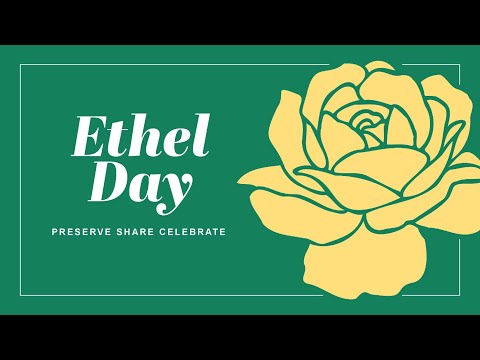On April 22, 1932, at Hampton University in Hampton, Virginia, seven community garden clubs joined forces to found the Negro Garden Club of Virginia (later known as the Virginia Garden Clubs). This group grew and grew – eventually becoming one of the largest black garden clubs in the country, comprising more than 60 chapters across the state. Ninety years later, the Morris Arboretum in Philadelphia celebrated the anniversary of that original confluence in April with the Ethel Early Clark Symposium (named after the Club’s first president), a gathering of gardening and horticulture who argued that the mission and impact of the Club – and others like it – remain deeply relevant today.
“It was not everything just gardening” explains Guina Hammond, program manager for the Pennsylvania Horticultural Society and one of the speakers at the event. Indeed, over the past century, black garden clubs across the United States have been instrumental in registering citizens to vote, improving neighborhoods and community, promoting access to food and promoting civic engagement on many levels.
“The Garden Club was at the forefront of asking for things that would improve the whole community,” says Lillian Harris Ransom, a Philadelphia judge and granddaughter of a member of the Community Garden Club in Portsmouth, Va.
A prime example: In 1942, under the leadership of President Lillian Hewes Savage, the Community Garden Club joined with the Norfolk Journal and Guide to sponsor a Victory Garden contest, in which members competed for top honors with their plots, taking advantage of the popularity of the latter. ration-generating gardens as a way to boost morale and food supplies during World War II. “It was activism, it was civil rights, and it was also friendly competition,” says Abra Lee, horticulturist, historian and writer specializing in the history of black gardens and another Ethel speaker. Day.
In Philadelphia, meanwhile, the Oasis Garden Club set out to beautify majority-black neighborhoods with cool planters and outdoor planters, many of which are still there today, often maintained by current garden clubs.
“That’s what we’ve always done. African American men and women build community.”
Throughout the 20th century, black garden clubs also provided refuge from racism and oppression. The Negro Garden Club of Virginia, for its part, was active in supporting wrongfully accused black men in the Jim Crow South: “We have to balance ugliness with beauty,” Savage urged.
Nowhere is a better example of this than the garden in Lynchburg, Virginia, the home of Anne Spencer, an eminent poet and amateur gardener and decorator, whose house and garden acted as a kind of Southern parlor to visit Harlem Renaissance luminaries including Langston Hughes, George Washington Carver, Thurgood Marshall, Martin Luther King Jr. and WEB Du Bois.
“It’s the African-American life – it’s a creativity and an art of African-American living, especially in the most difficult conditions,” says Wambui Ippolito, a horticulturist who found inspiration while traveling. -even to visit Spencer’s garden.
It’s a sentiment that all speakers at the Ethel Early Clark Symposium hope to carry on today and into the future: “Today’s garden clubs offer education, resources, networking opportunities, floral design , a civic and environmental responsibility,” says Teri Speight, President of Urban Gardening for National Garden Club. “It’s learning by example, what we need to do for our young people.” Speight founded Jabali Amani Garden Collective during COVID to further this mission. “We promote floral design, and we also have, because of our predecessors, a civic responsibility”, she says.
“Social activism is so important, and today there are so many things to get excited about,” Hammond says. “In the African-American community, food security, access to healthy food is very important; it’s something that gardens address.”
According to Lee, this activism is a direct continuation of the first clubs in the country: “One of the things that [Negro Garden Club of Virginia] the founders wanted to do was to share information between organizations and also to organize among themselves.”
“We have to balance ugliness with beauty.” —Lillian Hewes Savage
“That’s what we’ve always done,” Speight says. “African American men and women build community.”
For the speakers at the symposium, the most pressing concern today is to ensure that the legacy of these clubs is protected, so that it can be celebrated and continued. “A lot of that history is in someone’s storage box in the attic or the basement, or in a scrapbook Grandma made,” Ransom explains. “In this country, things that are important to the African-American community often go unreported by the public.”
“We can’t keep it all to ourselves. If that happens, we’ll never know this story,” Speight says. “Isn’t it time we told our own story?
Interested in knowing more? Watch the full symposium below.
This content is imported from YouTube. You may be able to find the same content in another format, or you may be able to find more information, on their website.




